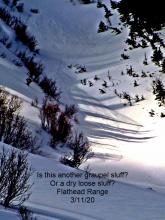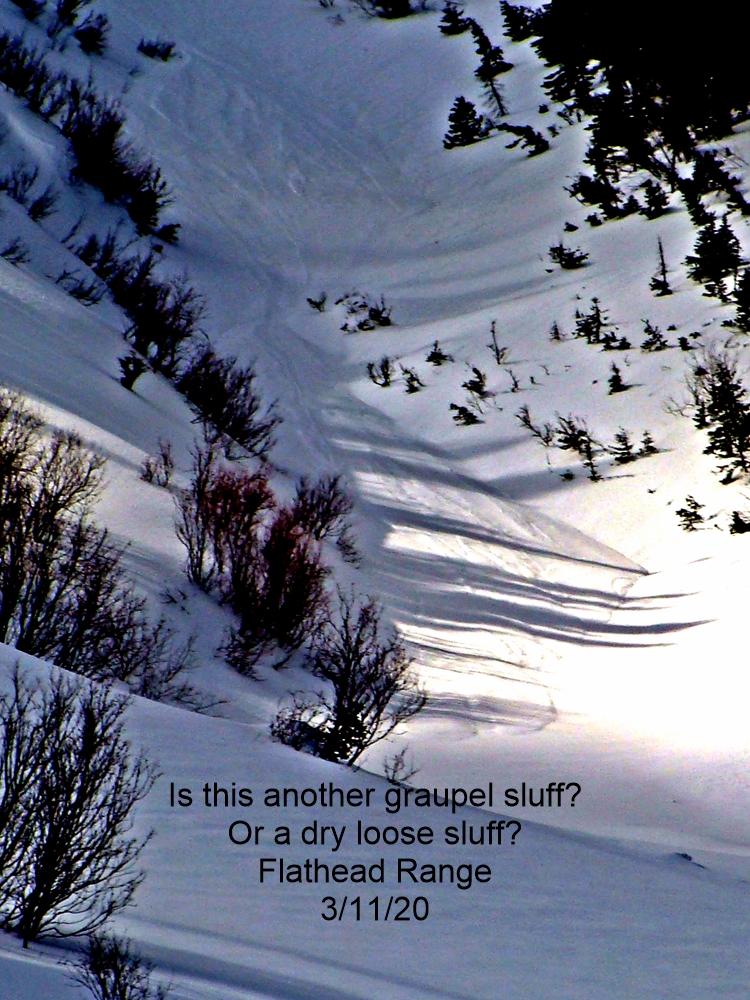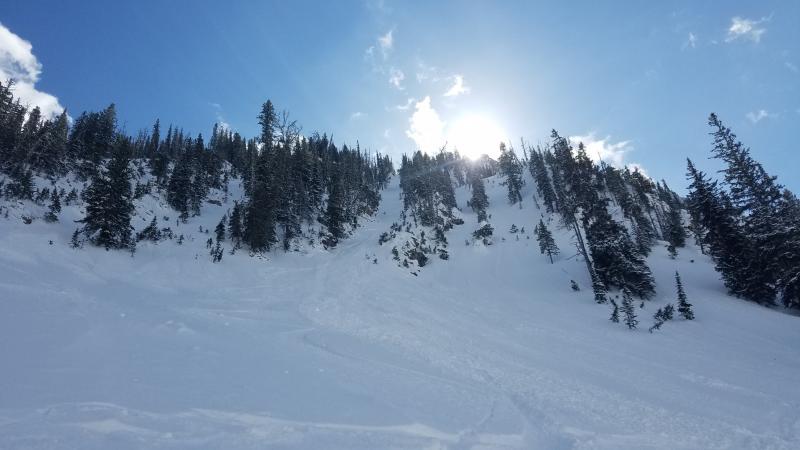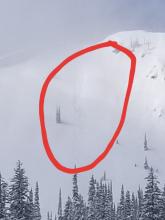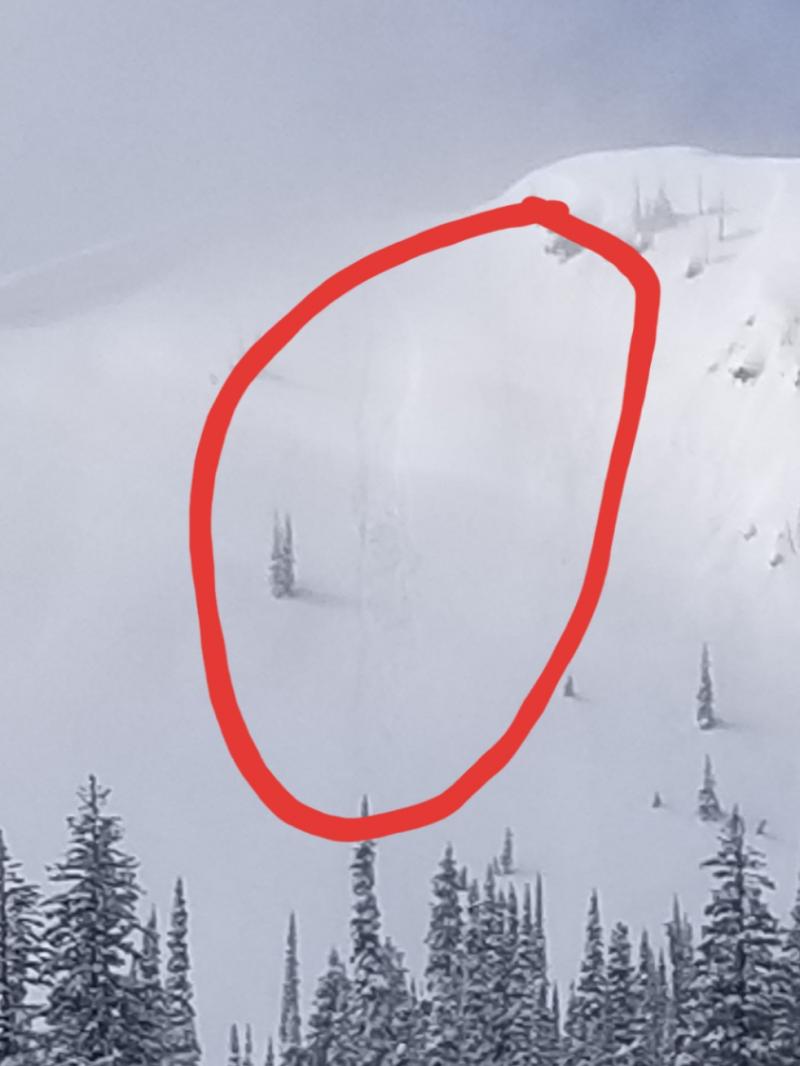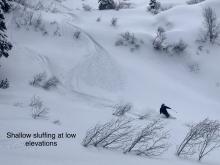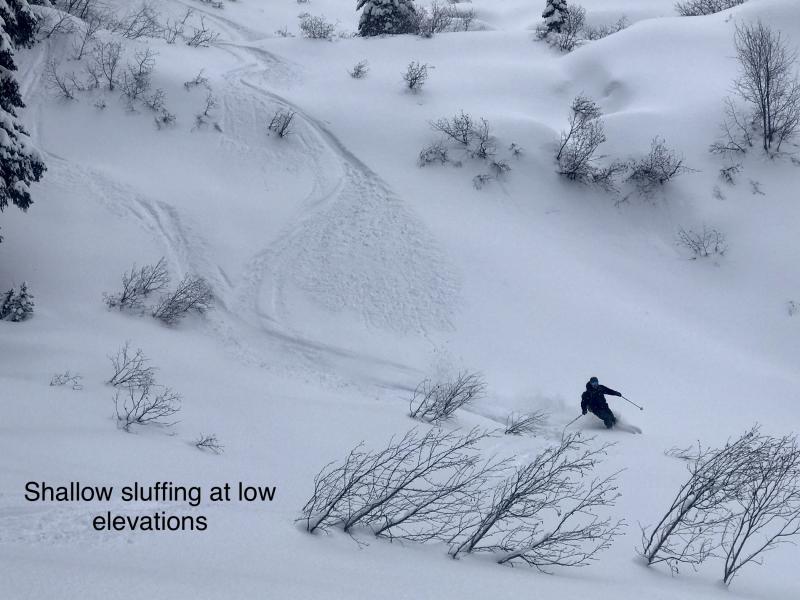| Sunday | Sunday Night | Monday | |
|---|---|---|---|
| Cloud Cover: | Partly Cloudy | Mostly Cloudy | Mostly Clear |
| Temperatures: | 19 to 25 deg. F. | 8 to 11 deg. F. | 21 to 27 deg. F. |
| Wind Direction: | Southwest | West | West |
| Wind Speed: | 14G28 | 15G29 | 12G24 |
| Snowfall: | 0" in. | 0" in. | 0" in. |
| Snow Line: | 500' | 1000' | 500' |
Whitefish Range
How to read the forecast
Shifting winds have built slabs over persistent weak layers on many aspects. They need time to heal. Avoid steep leeward slopes where soft slabs of drifted snow may be large enough to injure or bury you. In sheltered terrain, sluffs can entrain large amounts of snow and deep debris can pile up in terrain traps. Watch for rounded drifts below ridgelines and the sidewalls of gullies. Shooting cracks in drifted snow, and long running sluffs are signs of instability.

2. Moderate
?
Above 6500 ft.
2. Moderate
?
5000-6500 ft.
1. Low
?
3500-5000 ft.
- 1. Low
- 2. Moderate
- 3. Considerable
- 4. High
- 5. Extreme
-
Type ?
-
Aspect/Elevation ?
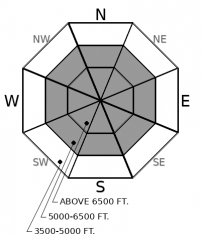
-
Likelihood ?CertainVery LikelyLikelyPossible
 Unlikely
Unlikely -
Size ?HistoricVery LargeLargeSmall

Shifting winds have drifted up to 8 inches of new snow onto exposed slopes on all aspects. New drifts are likely small, but could be larger in favored areas above treeline. You can get into trouble on steep leeward terrain, and on wind loaded slopes above terrain traps. Watch for rounded drifts below ridgelines and on the sidewalls of chutes. Recent natural avalanches and shooting cracks in slabby snow are red flags. Steer away from slopes steeper than about 35 degrees where fresh wind slabs sit atop persistent weak layers.
-
Type ?
-
Aspect/Elevation ?
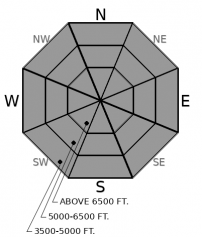
-
Likelihood ?CertainVery LikelyLikelyPossible
 Unlikely
Unlikely -
Size ?HistoricVery LargeLargeSmall

Widespread natural and triggered sluffs have been running for the past several days. As the sun comes out today, natural sluffs will be likely on solar aspects. Loose dry avalanches will be most dangerous where more snow has accumulated, and above terrain traps where debris can pile up deeply. Avoid steep, confined terrain where you can’t escape your sluff. Watch for loose snow running down above you on steep sunny slopes.
Observers reported widespread natural and human triggered storm slabs yesterday across the Swan and Flathead Ranges. Many of these slides were small, but several were large enough to bury you. Three separate parties had near misses with avalanches that broke in unexpected ways. One rider was carried and partially buried. She was able to extract herself from the debris. We have a report that very large avalanches may have run again on Mt. Grant or Liebig, similar to the destructive deep slabs that ran a week ago. Loose snow avalanches have been a common feature for several days. No one has reported avalanche activity in the Whitefish Range. However, the Stahl Peak weather station picked up 8 inches of snow while the Hornet Lookout reported continuous moderate winds, so I expect that wind slabs are reactive in parts of the range.
Snowfall exceeded 1 inch per hour in the Flathead and Swan Ranges yesterday morning. Precipitation stopped in the afternoon. Since the storm began on the evening of the 7th, Noisy Basin reported 10 inches of new snow, Stahl Peak saw 8 inches, and riders in the Flathead Ranger reported between 8 and 12 inches. Winds were moderate and shifted from southwest to north as a front dropped down from Canada in the afternoon. Soft new and windblown snow sits atop crusts and near surface facets buried at the start of the month. 5 day precipitation totals – on top of the crusts – exceed 3 inches of SWE in the Swan Range and 1 to 1.6 inches SWE in the northern Whitefish Range and Glacier Park. Slabs breaking on these new persistent weak layers caught people by surprise. Some avalanches were triggered remotely, propagated for long distances, and broke uphill of unsuspecting skiers. Winds will continue at snow-moving speeds near ridgetops today. Fresh slabs on top of persistent weak layers will be slow to heal. They can still break wider and further than expected.
With all the cohesionless snow in sheltered terrain, loose dry avalanches will still be likely in steep terrain. As the sun comes out today, solar radiation will weaken the already fragile bonds in the new snow and natural sluffs will be likely on sunny slopes. These will be more dangerous where there’s more snow at higher elevations, or above terrain traps where debris can pile up deeply.
Older, deeper, more sinister persistent weak layers lurk at the bottom of the snowpack like a monster under the bed. New loading from wind and snow has only added weight to the giant slabs on top of these weak layers. Though still unlikely, deep slab avalanches can run to lower elevations and destroy mature trees. An avalanche of that size would be un-survivable. Large cornice fall is exactly the kind of trigger that could set off another one of these monsters.
Expect clearing skies and seasonably cool temps today until a weather disturbance in Canada moves down the Divide this evening through Monday bringing more showers with it.
This forecast applies only to backcountry areas outside established ski area boundaries. The forecast describes general avalanche conditions and local variations always occur. This forecast expires at midnight on the posted day unless otherwise noted. The information in this forecast is provided by the USDA Forest Service who is solely responsible for its content.














